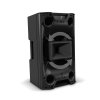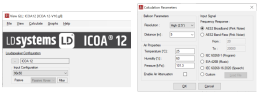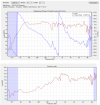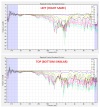The original poster have been back to ASR since August 15, 2023.
I'm the OP, I lost the login info for that account and also the email login to try and recover it, I honestly couldn't even recall the email used and my messages I sent to ASR to recover the account never got a response. I hope that's ok with the sites admin's (I'm not doing anything nefarious I quite literally just lost the info to get the account back, please don't ban me). They can delete the other account if they want.
Can we get back to the main topic of the Pit Viper not sounding good in its stock configuration and your measurements?
It doesn't sound good cause it's just not a good speaker, and the designer Paul Carmody has many speakers that don't match his sims at all, the overnight sensations being one of them. I have a few of his speakers and they're all just kind of average to poor in terms of driver integration. I rebuilt the speaker into a better 3 way and ran my own active filters. I've since built some other much better speakers and have basically written off any other designs that don't have full spinorama. Unfortunately I do believe most speaker designers out there are just plain bad at what they do and the community at large doesn't really seem to care.
I've kind of ducked out of DIY though because I accomplished what I wanted. I mean look at this in room response, doesn't get much better. None of the other speaker types I tried beat these and I'm convinced that a good neutral speaker with great dispersion is about the best humans can do at the moment. This is a $14 nd25fw, better than most drivers, which makes me wonder what are we even doing with all these other tweeters and exotic diaphragms, lining the pockets of driver manufacturers mostly.
I made several really good sounding speakers with great linearity, dispersion, and dynamaics. After that there just really does not seem like there is anywhere else to go and the hobby just felt like unecessary consumption to continue. I also desired to simplify my life a bit and currently just use some Kali LP6 V2 that I modded with bracing and dampening with some subs I built. DIY also just feels like a waste of time anymore, manufacturers are putting out crazy good stuff that doesn't cost much. The effort to build and analyze just isn't worth it to me at this point and I sort of stopped feeling a sense of accomplishment from my builds once I had the process down.
I attended some speaker competitions and they really just aren't for me.
I still have a 3 way I made with a friend who is on here to work out the passive xover for and after that who knows if I'll make anything else. Important to know when to take a break from something if you're not really having fun.
3 way I made with pit viper woofer. Wish I gone with a smaller mid, overall sounded fine but kind of forward due to the diffraction of the tweeter. They are kind of huge and I didn't like looking at them so I just kept the woofers out to use as subs.



